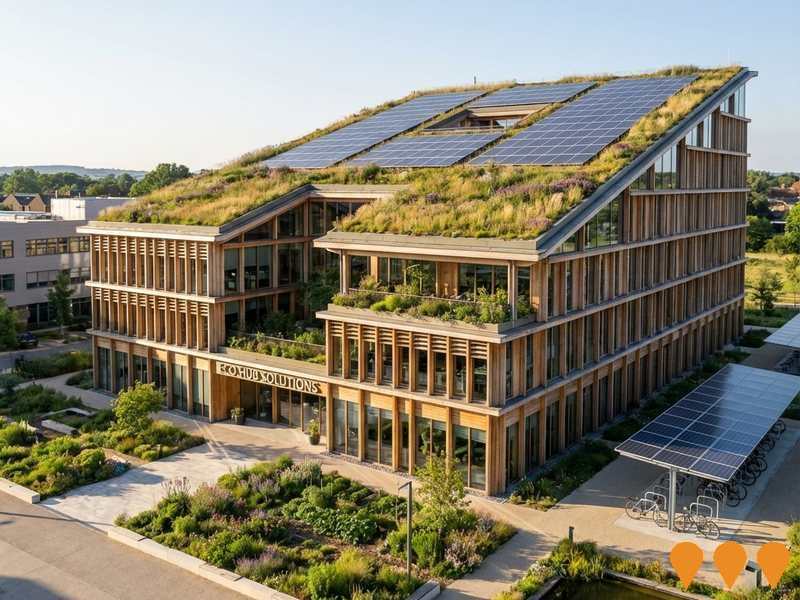Chart Color Schemes
est. as @ -- *
ABS ERP | -- people | --
2021 Census | -- people
Sales Activity
Curious about local property values? Filter the chart to assess the volume and appreciation (including resales) trends and regional comparisons, or scroll to the map below view this information at an individual property level.
Find a Recent Sale
Sales Detail
Population
An assessment of population growth drivers in Malabar - La Perouse reveals an overall ranking slightly below national averages considering recent, and medium term trends
Based on AreaSearch's analysis, Malabar - La Perouse's population is around 10,982 as of Aug 2025. This reflects an increase of 372 people since the 2021 Census, which reported a population of 10,610 people. The change is inferred from the estimated resident population of 10,915 from the ABS as of June 2024 and an additional 22 validated new addresses since the Census date. This level of population equates to a density ratio of 1,305 persons per square kilometer, which is above the average seen across national locations assessed by AreaSearch. Over the past decade, Malabar - La Perouse has demonstrated resilient growth patterns with a compound annual growth rate of 0.2%, outpacing the SA3 area. Population growth for the area was primarily driven by overseas migration.
AreaSearch is adopting ABS/Geoscience Australia projections for each SA2 area, as released in 2024 with 2022 as the base year. For any SA2 areas not covered by this data, AreaSearch is utilising the NSW State Government's SA2 level projections, as released in 2022 with 2021 as the base year. Growth rates by age group from these aggregations are also applied to all areas for years 2032 to 2041. Considering the projected demographic shifts, a population increase just below the median of national statistical areas is expected, with the area expected to increase by 1,312 persons to 2041 based on the latest population numbers, recording a gain of 11.3% in total over the 17 years.
Frequently Asked Questions - Population
Development
AreaSearch analysis of residential development drivers sees Malabar - La Perouse recording a relatively average level of approval activity when compared to local markets analysed countrywide
Malabar - La Perouse granted approval for approximately 59 residential properties annually. Over the past five financial years, from FY21 to FY25, around 297 homes were approved, with an additional 5 approved so far in FY26. Despite a decrease in population during this period, development activity has been relatively adequate, benefiting buyers.
The average expected construction cost value for new dwellings is $722,000, indicating that developers are targeting the premium market segment. This financial year, $1.1 million in commercial development approvals have been recorded, suggesting a predominantly residential focus. Compared to Greater Sydney, Malabar - La Perouse shows 106.0% higher construction activity per person, offering buyers greater choice. New development consists of 17.0% detached houses and 83.0% townhouses or apartments, marking a significant shift from the current housing pattern of 47.0% houses. This trend towards denser development provides accessible entry options for downsizers, investors, and entry-level buyers. With around 185 people per dwelling approval, Malabar - La Perouse is characterized as a low density area.
Future projections indicate that Malabar - La Perouse will add approximately 1,245 residents by 2041. At current development rates, new housing supply should comfortably meet demand, providing good conditions for buyers and potentially supporting growth beyond current population projections.
Frequently Asked Questions - Development
Infrastructure
Malabar - La Perouse has very high levels of nearby infrastructure activity, ranking in the top 20% nationally
Changes in local infrastructure significantly affect an area's performance. AreaSearch has identified 23 projects that could impact this region. Notable ones include Malabar Ocean Pool Accessible Amenities Building, Kamay Ferry Wharves, Jennifer St, Little Bay, and 27 Jennifer Street, Little Bay. The following list details those likely to be most relevant.
Professional plan users can use the search below to filter and access additional projects.
INFRASTRUCTURE SEARCH
 Denotes AI-based impression for illustrative purposes only, not to be taken as definitive under any circumstances. Please follow links and conduct other investigations from the project's source for actual imagery. Developers and project owners wishing us to use original imagery please Contact Us and we will do so.
Denotes AI-based impression for illustrative purposes only, not to be taken as definitive under any circumstances. Please follow links and conduct other investigations from the project's source for actual imagery. Developers and project owners wishing us to use original imagery please Contact Us and we will do so.
Frequently Asked Questions - Infrastructure
Prince Henry at Little Bay
A major urban renewal project by Landcom, transforming the former Prince Henry Hospital site into a new residential and community precinct. The project includes a mix of over 1,000 homes, renovated heritage buildings, aged care accommodation, commercial facilities, and a community centre.
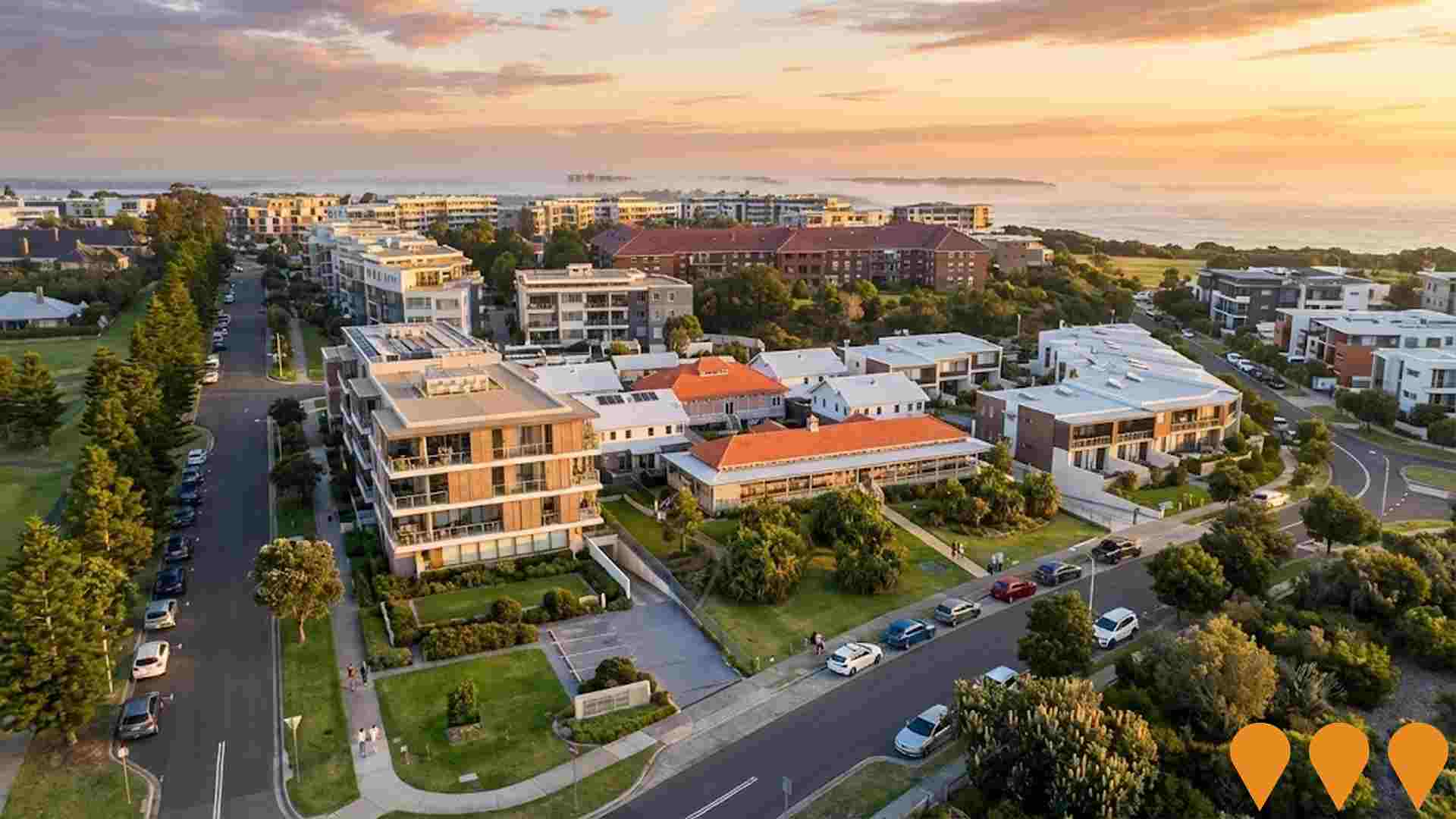
Kamay Ferry Wharves
Completed $78M multi-use wharves at La Perouse and Kurnell in Botany Bay, featuring recreational vessel berthing (up to 20m), fishing facilities, cultural gathering spaces with Aboriginal artworks by Jordan Ardler and Shane Youngberry, and seating areas. Originally designed for ferry connections, the wharves opened in February 2025 without a ferry service after no operators responded to Expression of Interest. Includes extensive seagrass restoration program and seahorse habitat offset measures.
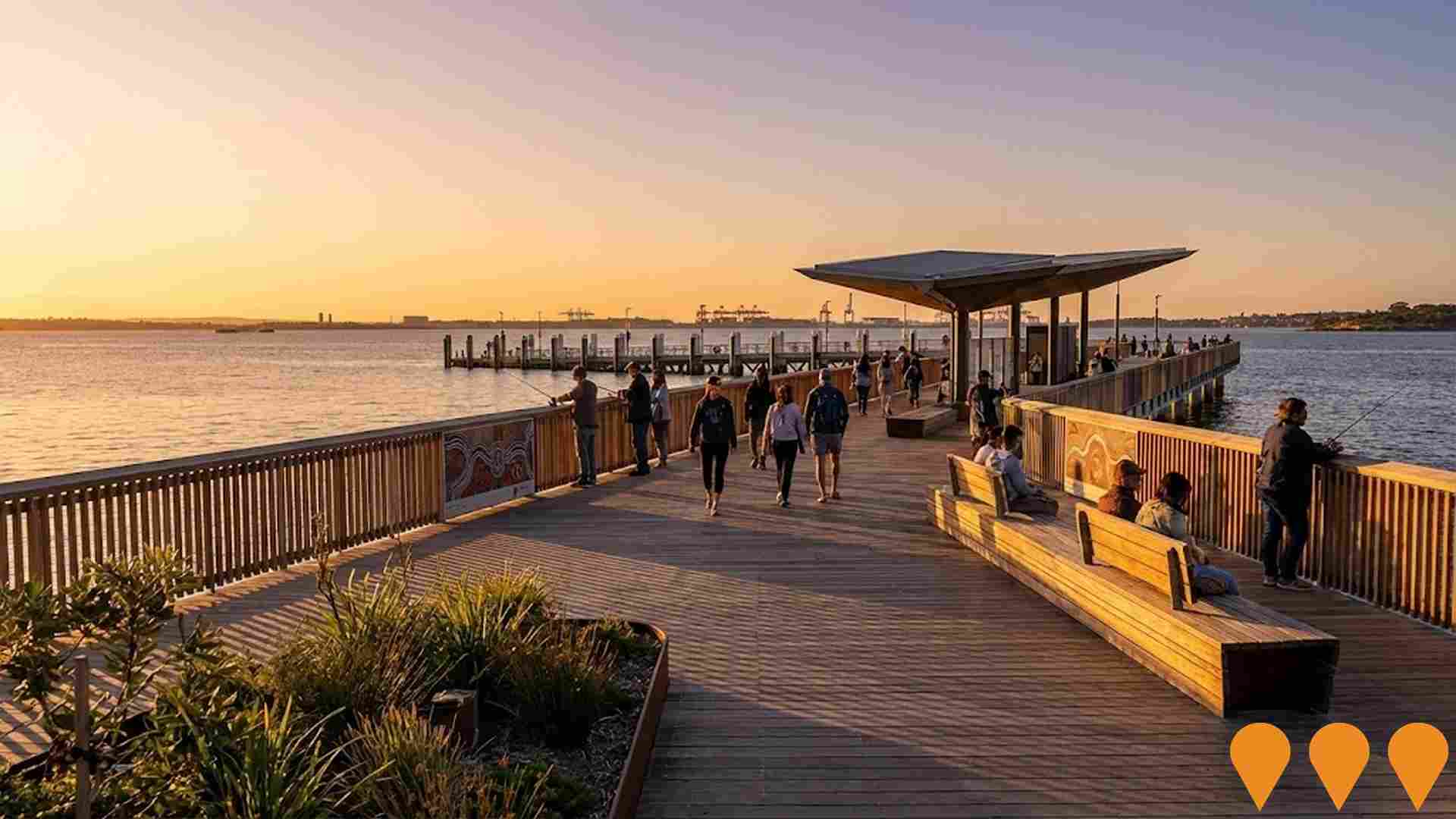
Google Pacific Connect - Tabua and Honomoana Cable Landing Infrastructure
Major subsea cable landing infrastructure for Google's Pacific Connect Initiative, supporting the Tabua and Honomoana transpacific cables connecting Australia to the United States, Fiji, and French Polynesia. Developed through Google's Perch Infrastructure in partnership with SUBCO, this project enhances digital resilience and international connectivity for Sydney and Australia. Construction includes horizontal directional drilling and shared landing infrastructure at Maroubra Beach.
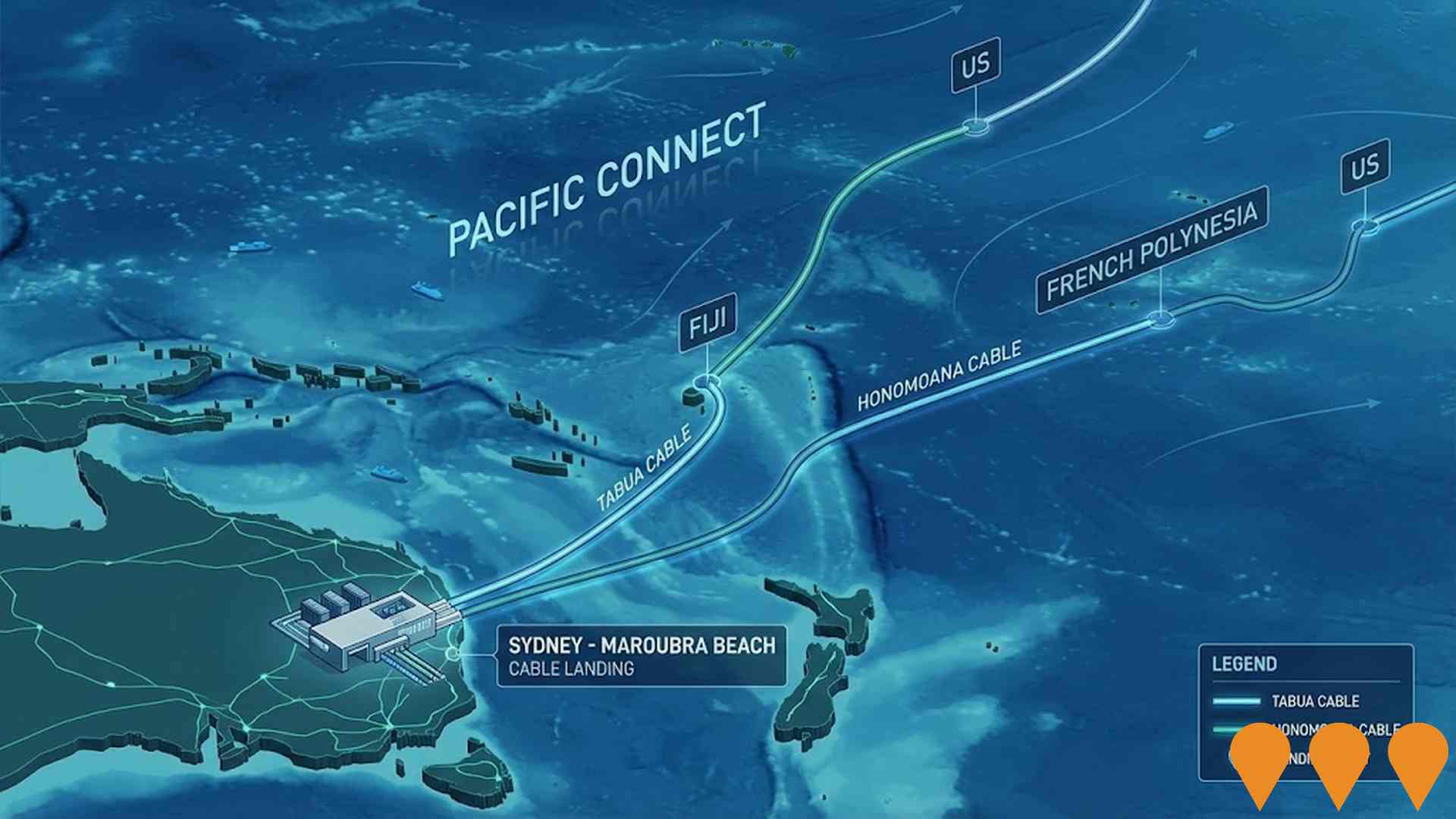
Botany Cogeneration Plant (Matraville)
State Significant Development SSD-10373 for a waste-to-energy (cogeneration) plant to process around 165,000 tonnes per year of residual waste to produce steam and electricity for the Opal Botany Mill. The application was lodged in 2019, then withdrawn in 2022 following NSW thermal energy-from-waste regulations that prohibit such facilities in the Sydney basin. In 2025, Randwick City Council opposed potential regulatory changes that might allow a revival; as of now, the project remains withdrawn and prohibited under current rules.
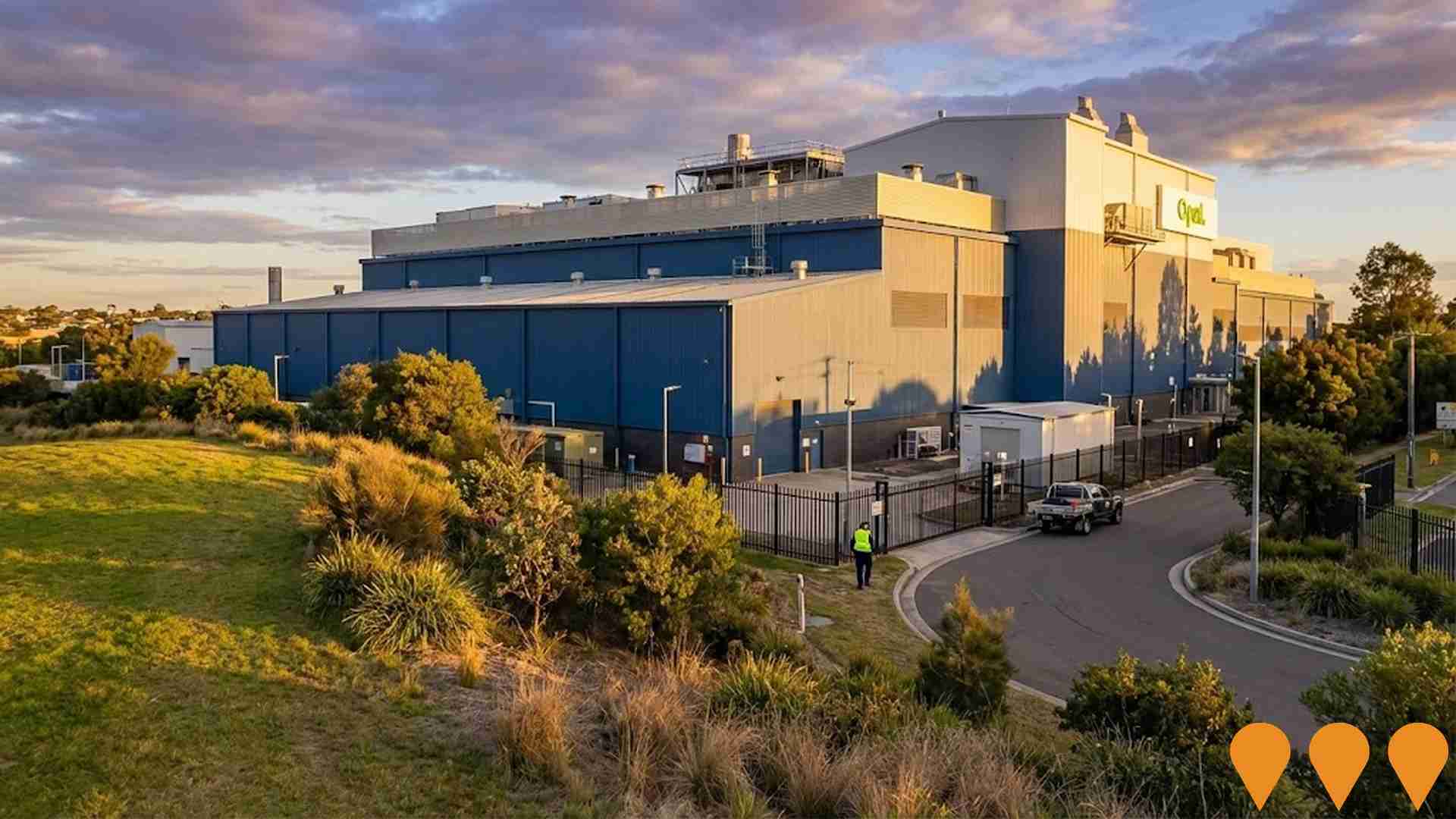
Kurnell Visitor Centre Reconstruction
Rebuild of the Kurnell Visitor Centre within Kamay Botany Bay National Park. The old centre (closed since 2019) was demolished and a new facility is under construction, delivering exhibition space, education and learning areas, amenities, and park operations offices. Contractor Gartner-Rose is on site. NPWS indicates the centre will remain closed during works and is scheduled to reopen in 2026.
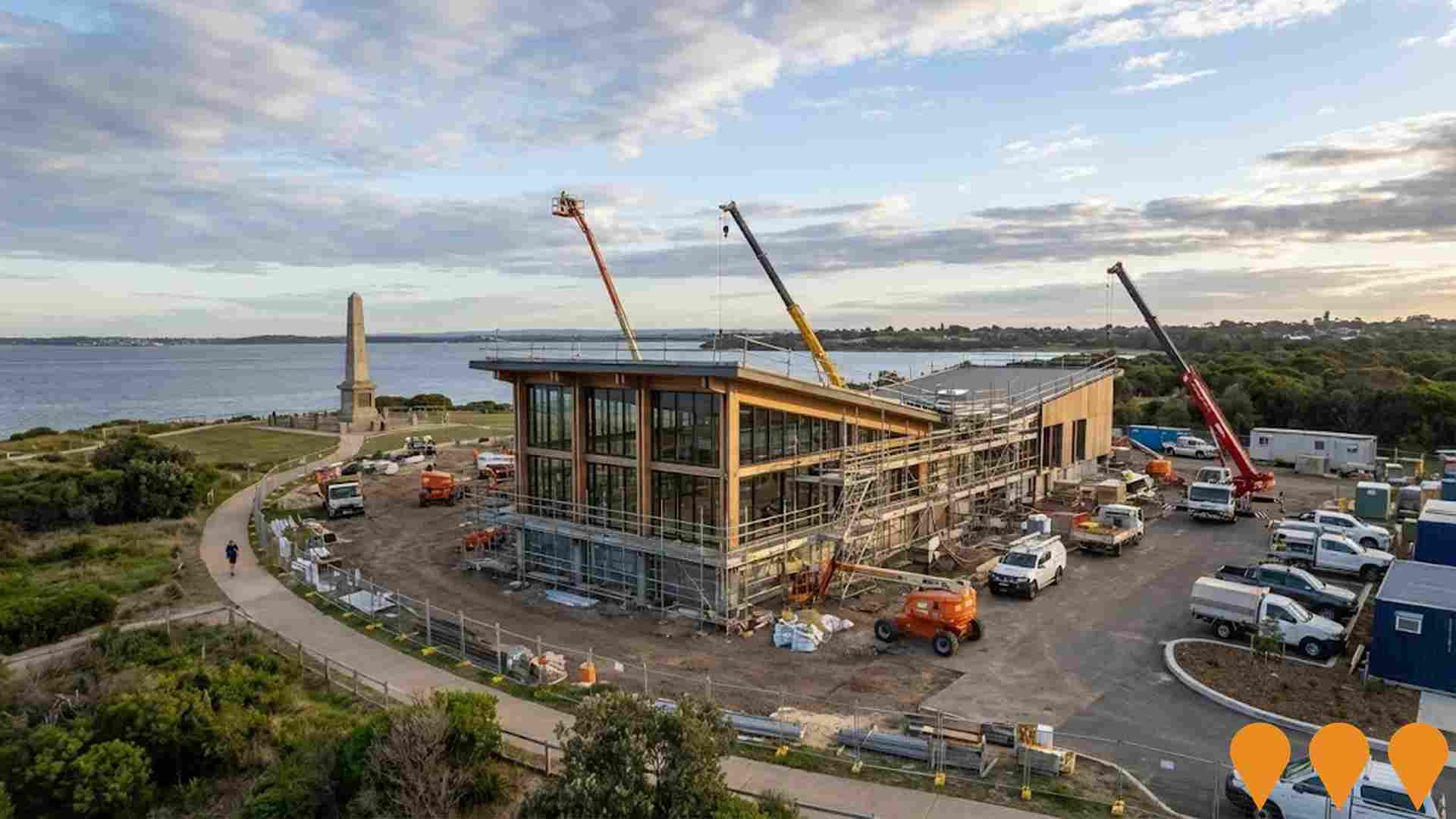
Yorktown Parade and Fitzgerald Avenue Affordable Housing Redevelopment
NSW Government affordable housing redevelopment replacing existing 33 three-bedroom dwellings with 144 new units in 6 apartment buildings (4 x 3-storey and 2 x 3-4-storey). The development includes 94 affordable homes and 50 social housing homes, with 77 parking spaces, common room and landscaped areas.
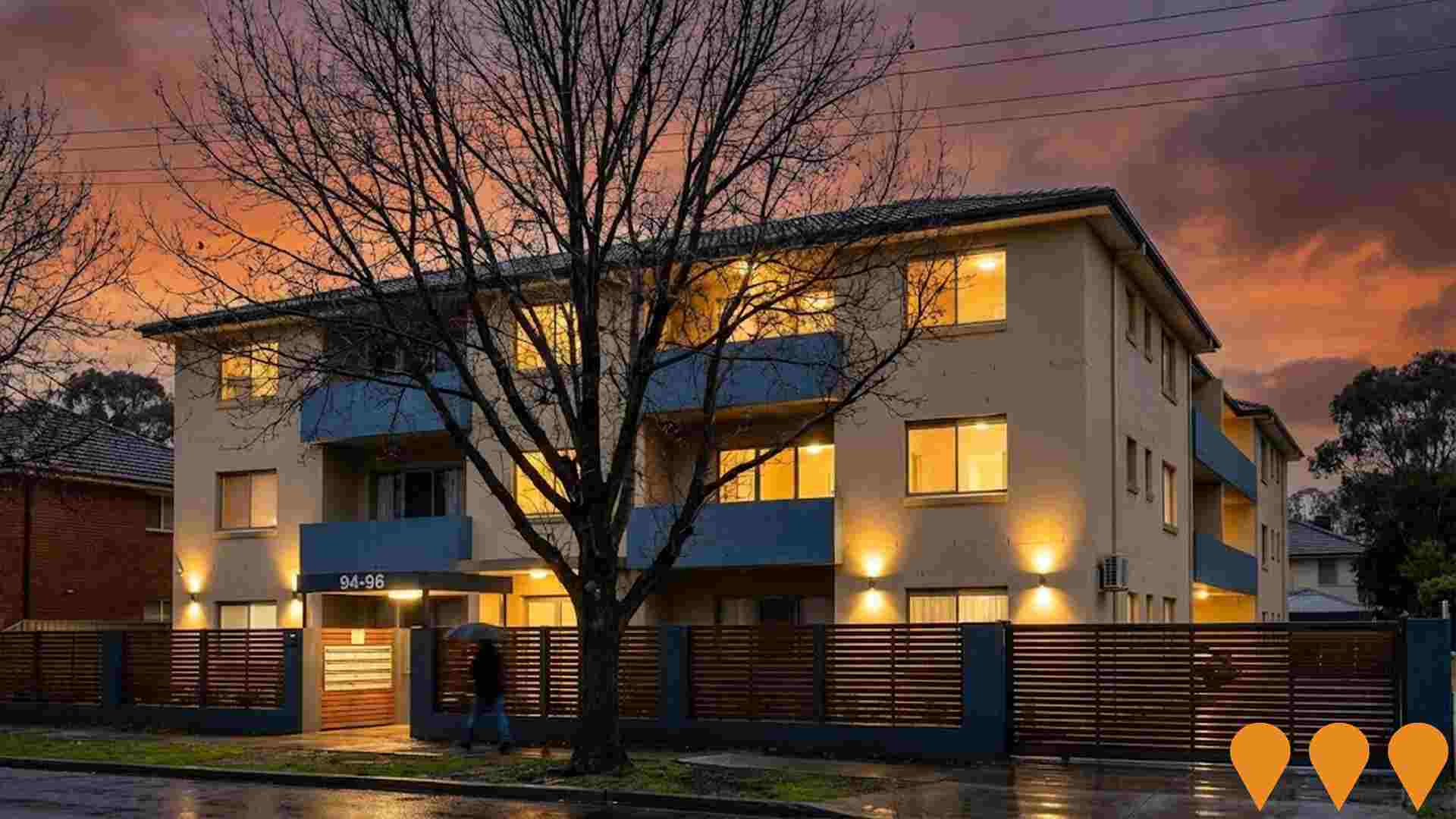
Finucane Reserve Upgrade
Comprehensive upgrade of the playground and surrounding parkland at Finucane Reserve, including a new climbing net with slide, swing set, spinner, rubber soft-fall surfacing, concrete footpath linking Lawson Street and Menin Road, seating, picnic table with timber shade structure, bike racks, wheelchair accessible drinking bubbler, additional trees for shade, and safe remediation of asbestos-containing material. The design was guided by students from Soldiers Settlement Public School who approached Council with improvement ideas in 2024.
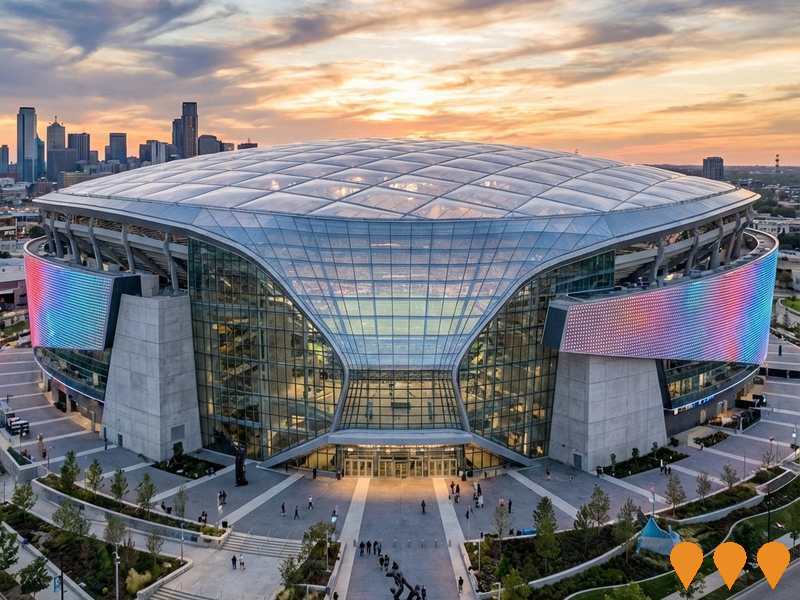
Heffron Park Central Amenities Upgrade
Reconstruction of the Heffron Park Central amenities block adjacent to the netball courts to enhance accessibility and inclusivity. Features include large change room, female dedicated bathrooms, DDA bathroom, 5 unisex bathrooms, referee bathroom, sports groups storeroom, building plant room and council storeroom.

Employment
Employment drivers in Malabar - La Perouse are experiencing difficulties, placing it among the bottom 20% of areas assessed across Australia
Malabar - La Perouse has a highly educated workforce with professional services being strongly represented. The unemployment rate in June 2025 was 7.8%, showing an estimated employment growth of 3.7% over the past year.
As of that date, 5,196 residents were employed while the unemployment rate was 3.6% higher than Greater Sydney's rate of 4.2%. Workforce participation lagged significantly at 50.1%, compared to Greater Sydney's 60.0%. Key industries of employment among residents included health care & social assistance, education & training, and professional & technical services. The area had a particular specialization in public administration & safety, with an employment share 1.4 times the regional level.
Retail trade had limited presence at 7.0%, compared to the regional average of 9.3%. Employment opportunities appeared limited locally, as indicated by the Census working population vs resident population count. Between June 2024 and June 2025, employment levels increased by 3.7% while labour force grew by 2.4%, causing a 1.2 percentage point drop in unemployment rate. In contrast, Greater Sydney experienced employment growth of 2.6% and labour force growth of 2.9%, with a 0.3 percentage point rise in unemployment rate. Jobs and Skills Australia's national employment forecasts from May 2025 projected national employment growth of 6.6% over five years and 13.7% over ten years, with varying rates across industry sectors. Applying these projections to Malabar - La Perouse's employment mix suggested local growth of approximately 6.9% over five years and 13.9% over ten years.
Frequently Asked Questions - Employment
Income
Income metrics indicate excellent economic conditions, with the area achieving higher performance than 75% of national locations assessed by AreaSearch
Malabar - La Perouse has a median taxpayer income of $62,493 and an average of $87,551 according to the latest postcode level ATO data aggregated by AreaSearch for financial year 2022. This is among the highest in Australia, contrasting with Greater Sydney's median income of $56,994 and average income of $80,856. Based on Wage Price Index growth of 12.61% since financial year 2022, current estimates would be approximately $70,373 (median) and $98,591 (average) as of September 2025. Census data reveals household, family and personal incomes all rank highly in Malabar - La Perouse, between the 78th and 79th percentiles nationally. The data shows the $4000+ bracket dominates with 25.5% of residents (2,800 people), unlike trends the region where 30.9% fall within the $1,500 - 2,999 range. The substantial proportion of high earners (37.1% above $3,000/week) indicates strong economic capacity throughout Malabar - La Perouse. High housing costs consume 18.8% of income, though strong earnings still place disposable income at the 75th percentile and the area's SEIFA income ranking places it in the 8th decile.
Frequently Asked Questions - Income
Housing
Malabar - La Perouse displays a diverse mix of dwelling types, with above-average rates of outright home ownership
In Malabar - La Perouse, as per the latest Census evaluation, houses constituted 46.6% of dwellings while other types such as semi-detached homes, apartments, and 'other' dwellings made up 53.4%. This is in contrast to Sydney metropolitan area's figures of 26.9% houses and 73.1% other dwellings. Home ownership in Malabar - La Perouse was recorded at 33.2%, with mortgaged properties accounting for 28.8% and rented dwellings making up the remaining 38.0%. The median monthly mortgage repayment in the area stood at $3,200, exceeding Sydney metro's average of $1,863 and significantly higher than the national figure of $375. Meanwhile, median weekly rent in Malabar - La Perouse was recorded at $535, slightly higher than Sydney metro's $550 but substantially above the national average of $375.
Frequently Asked Questions - Housing
Household Composition
Malabar - La Perouse has a typical household mix, with a higher-than-average median household size
Family households account for 70.2% of all households, including 33.7% couples with children, 26.1% couples without children, and 9.5% single parent families. Non-family households constitute the remaining 29.8%, with lone person households at 27.6% and group households comprising 2.1%. The median household size is 2.5 people, which is larger than the Greater Sydney average of 2.4.
Frequently Asked Questions - Households
Local Schools & Education
Malabar - La Perouse shows strong educational performance, ranking in the upper quartile nationally when assessed across multiple qualification and achievement indicators
The area's university qualification rate is 39.5%, significantly lower than the SA4 region average of 54.6%. This presents both a challenge and an opportunity for targeted educational initiatives. Bachelor degrees are the most common at 24.9%, followed by postgraduate qualifications (12.2%) and graduate diplomas (2.4%). Vocational credentials are also prevalent, with 32.8% of residents aged 15+ holding such qualifications - advanced diplomas account for 12.1% and certificates for 20.7%.
Educational participation is high, with 36.2% of residents currently enrolled in formal education. This includes 12.0% in primary education, 10.0% in secondary education, and 6.8% pursuing tertiary education. Malabar - La Perouse's 3 schools have a combined enrollment of 773 students as of the latest data. The area has typical Australian school conditions (ICSEA: 1030) with balanced educational opportunities. All three schools focus exclusively on primary education, with secondary options available in nearby areas. School places per 100 residents stand at 7.0, below the regional average of 11.1, indicating some students may attend schools outside the area.
Frequently Asked Questions - Education
Schools Detail
Nearby Services & Amenities
Transport
Transport servicing is high compared to other areas nationally based on assessment of service frequency, route connectivity and accessibility
Transport analysis in Malabar - La Perouse shows 65 active public transport stops operating. These are mixed bus services. There are 20 individual routes serving these stops, providing a total of 3724 weekly passenger trips.
Residents have excellent transport accessibility, with an average distance of 163 meters to the nearest stop. Service frequency averages 532 trips per day across all routes, equating to approximately 57 weekly trips per individual stop.
Frequently Asked Questions - Transport
Transport Stops Detail
Health
Malabar - La Perouse's residents are healthier than average in comparison to broader Australia with a fairly standard level of common health conditions seen across both young and old age cohorts
Health data shows Malabar - La Perouse residents have a relatively positive health status, with common conditions seen across both young and old age groups. Private health cover is exceptionally high at approximately 64% of the total population (7,006 people), compared to 70.6% in Greater Sydney and 55.3% nationally. The most prevalent medical conditions are arthritis (7.6%) and mental health issues (6.4%), while 71.1% report being completely clear of ailments, compared to 76.0% in Greater Sydney.
The area has 22.4% residents aged 65 and over (2,456 people), higher than the 15.1% in Greater Sydney. This aligns with the general population's health profile.
Frequently Asked Questions - Health
Cultural Diversity
Malabar - La Perouse was found to be more culturally diverse than the vast majority of local markets in Australia, upon assessment of a range of language and cultural background related metrics
Malabar-La Perouse has a higher cultural diversity than most local markets, with 23.9% of its population speaking a language other than English at home and 32.7% born overseas. Christianity is the predominant religion in Malabar-La Perouse, comprising 60.4% of its population. Notably, Judaism is overrepresented, making up 2.2% compared to the regional average of 0.4%.
The top three ancestry groups are English (22.0%), Australian (18.4%), and Irish (10.6%). There are also notable divergences in certain ethnic groups: French is slightly overrepresented at 1.8%, Russian is underrepresented at 0.9%, and Hungarian is marginally underrepresented at 0.5%.
Frequently Asked Questions - Diversity
Age
Malabar - La Perouse hosts an older demographic, ranking in the top quartile nationwide
Malabar - La Perouse has a median age of 44, which exceeds Greater Sydney's figure of 37 and the national norm of 38. The 65-74 age group comprises 11.2% of its population, higher than Greater Sydney's percentage. Conversely, the 25-34 cohort makes up 10.8%, lower than Greater Sydney's figure. According to the 2021 Census, the 15-24 age group has grown from 9.5% to 11.8%. However, the 25-34 cohort has declined from 11.6% to 10.8%. By 2041, demographic modeling suggests Malabar - La Perouse's age profile will change significantly. The 65-74 group is projected to grow by 33%, reaching 1,644 from 1,232. Those aged 65 and above are expected to comprise 72% of the population growth. Meanwhile, the 0-4 and 5-14 age groups are anticipated to experience population declines.

